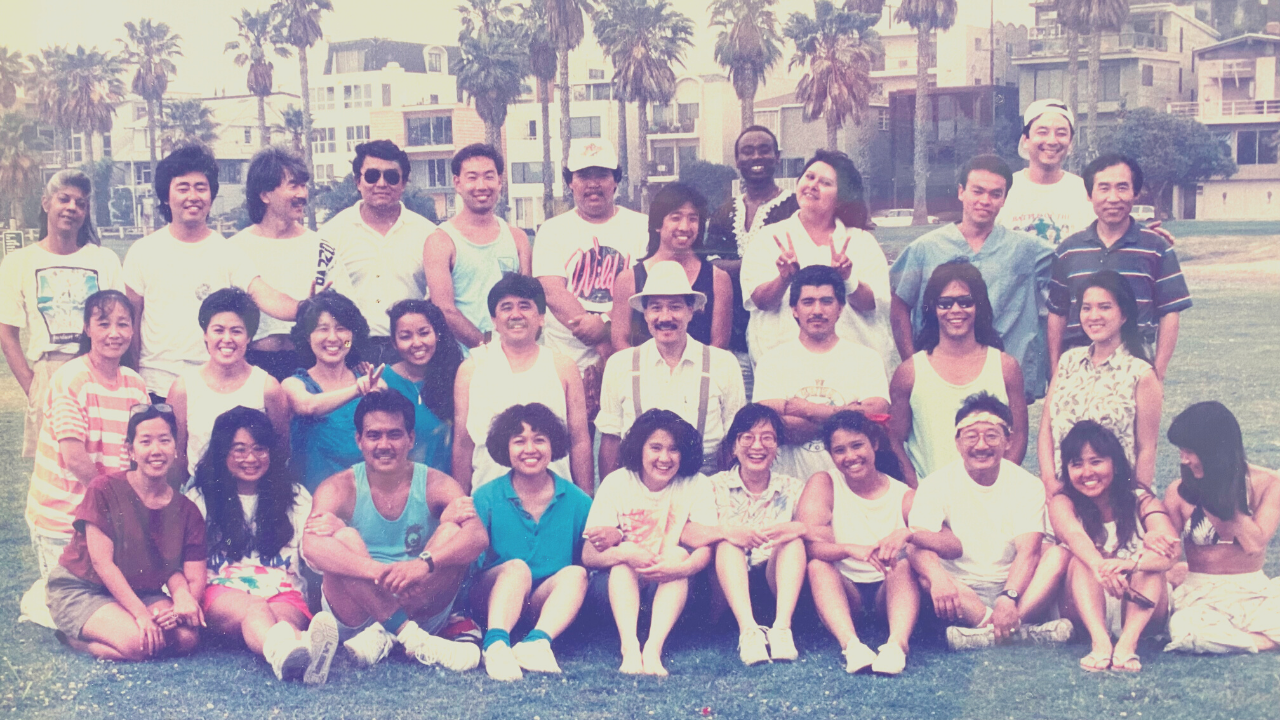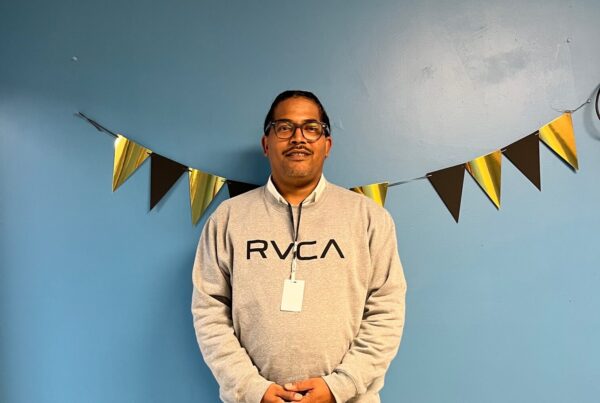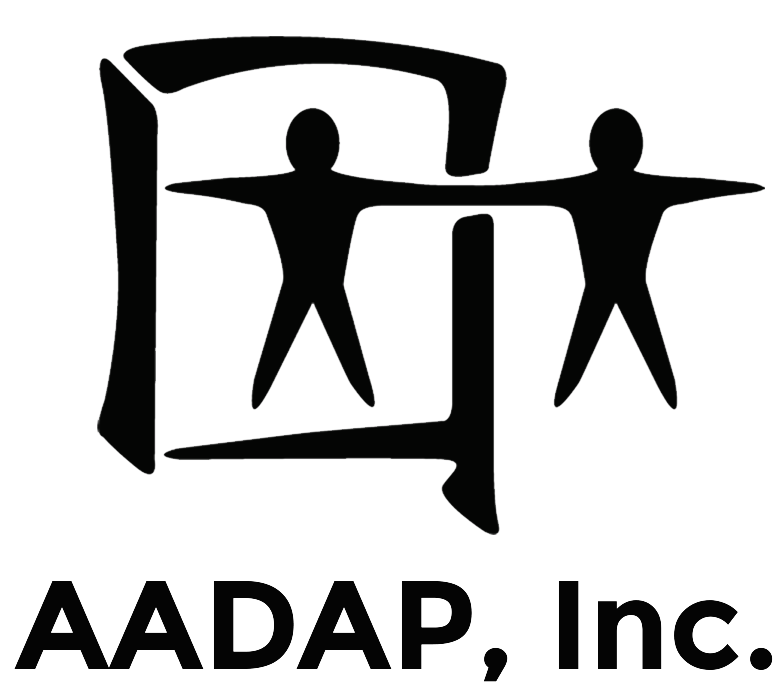 Part Two: The Middle Years, 1980s and 1990s
Part Two: The Middle Years, 1980s and 1990s
By Mike Watanabe, President Emeritus, MSW, LHD
This is the second of a three-part series on AADAP’s 50 years in service. This covers the middle period from 1980 to 2000. These two decades were marked by increasing waves of deadly epidemics from PCP, to cocaine, and eventually rock cocaine. Federal policies began with the meager “Just Say No” campaigns in the early 1980’s, but accelerated in the 1990s to serve a much larger client base and many more communities.
AADAP participated in those prevention campaigns and developed the G-DAAP (Gardena Drug And Alcohol Prevention task force). Carol Miyake, Prevention Director worked with the El Camino Lions Club , who were all in for the organizing. The Gardena High School Task Force that emerged developed leadership whose work was recognized in a White House visit with the First Lady. Other prevention programs developed the “Community Prevention” model into Koreatown as K-DAAP and the IYCC (Indochinese Youth and Community Center). Prevention Directors Wayne Sugita, Cheryl Sekiya Kameoka, and Diane Ujiiye grew these programs through the period to great heights. Other future leaders before and during the 1980s were also grounded in these prevention programs, e.g. Jeff Adachi, Jean Quan, Mitch Maki, Le Nguyen,
Federal policies finally emerged with the Anti-Drug Abuse Act of 1988. AADAP played a significant role in supporting the development of NAPAFASA (National Asian Pacific Families Against Substance Abuse) in 1988 in support of Ford Kuramoto, its founder, and who was also one of AADAP’s founders. This took the prevention model to a national stage. Cutting edge workshops were developed and presented by our staff at national conferences. NAPAFASA’s conferences were also the forum for programs around the country and throughout the Pacific. NAPAFASA organized a strong voice for API communities throughout the country and across the Pacific territories. We were at the table, and programs in dozens of cities sprung up in its wake.
AADAP was ready to compete successfully and earned two companion grants in 1988 to fund the Asian Pacific Youth Program (APYP) through the Center for Substance Abuse Prevention (CSAP) and the Office of Human Development Services (OHDS). Glenn Andres was promoted to Manager of this program and we were fortunate to recruit Mark Mayeda to return to AADAP to help administer these new programs and negotiate our first Federal Indirect Cost Rate. It was structured similar to AADAP’s initial format in 1973, as we contracted with other youth agencies to provide service through a coalition model. KYCC, SIPA, IYCC, and AYC were provided substantial funding that enabled them to expand services to their youth, but also provided a critical mass of staffing for five years to grow their agencies further. In 1989, we found a new partner in now Congressperson Karen Bass, who was just forming the Community Coalition with the same organizing funding we received. We collaborated on organizing principles and strategies in our respective communities.
In the next year, 1990 we won funding for the East West Community Partnership (EWCP) which funded the community prevention model. This was indirect funding that enabled community organizing for the first time. We hired Allison Tom to lead this and expand contracting with the same agencies while adding LTSC.
These grants were demonstration projects, and they had a sunset clause. To us, they were new services that provided the resources to advocate for more services. The decade of the 1990s was an active one at the State level. We organized through the Department of Alcohol and Drug Programs’ (DADP) API Constituent Committee and the API California Action Network (APIsCAN) to articulate statewide needs in a far-ranging “Forum Report”. One of those was written by AADAP and introduced by freshman Assemblyman Javier Becerra. This was used to great effect to impact policies and legislation at the time. AB 1955 would have funded all successful Federal demonstration projects upon their sunset with State money. It was widely supported and achieved a nearly unanimous vote in the Senate.
While this great boon in funding was achieved on the “demand side”, most of the 1988 Bill’s funding targeted the “supply side” and launched the War on Drugs. This was during the Rock cocaine period, and the war was literal. The growth in funding and military tactics of the LAPD contributed to a powder keg environment in south L.A. In April, 1992 the town erupted in the riots following the Rodney King verdict. We were in the middle of the unrest. The Firestone Company next door was looted and set on fire, nearly destroying our facility. The residents were evacuated to a hotel, while staff and some volunteer residents and neighbors fought the fire.
“I remember Mark Mayeda going up on the roof with garden hoses to fight the fire. Even some Black neighbors came up there.” – Dean Nakanishi
In the weeks and months following the unrest, we engaged in great debates and discussions to address the conflicts and relationships between the different ethnic communities.
“…our partners struggled with needing to address the Asian-Black tensions fueled by the media and the significant financial, physical, and socio-political damage inflicted on the Korean American and other Asian American communities.” -Allison Tom Miura
Our partnership with the Community Coalition found a new purpose. It was during this time that Secretary Louis Sullivan of HHS visited AADAP during his tour of South Los Angeles to hear our concerns and perspectives.
Two years later, the Northridge Earthquake rocked us again. In the scramble to provide disaster relief, SAMHSA called me asking if we would help the relief effort through our EWCP. It was strange, but they explained that they could provide resources in the community faster through our indirect grant by just writing a grant award letter, while funding that they sent through the various public agencies would take weeks or months. We launched into expanding the partnership, and Allison Tom, the Director of EWCP recruited various agencies in the Valley and proceeded to conduct outreach and disseminate information and relief supplies.
The Therapeutic Community (TC) was the most intense, long term treatment in our toolbox. After we moved to the Crenshaw Motor Hotel in 1977 and completed renovations to complete our Certificate of Occupancy, the program grew each year under the leadership of Margaret Endo, Al Mizuno, the late Phyllis Mickle and Ben Robbins during the two decades. The success of this program was high, and its graduates were strong with few relapses among them. The Family style, self-help model with “each one, teach one”, lay the groundwork for our later Ohana. Over the two decades, these graduates became a feeder source of many of the agency’s long-term leadership staff. Graduates have also formed the backbone of the counseling programs, with long term loyalty and stability.
The TC launched the MTC Construction Company in the mid 1990s. Al Mizuno and Mark Manzo guided this self-sufficiency effort to develop unrestricted revenue under a for-profit subsidiary. MTC did very well for about ten year, and it provided revenue that helped to acquire additional facilities. Much of this came from contracts with the Department of Water and Power for environmental programs, e.g. the Ultra-Low Flush Toilet program run by the late Del Sakamoto. We have had a long-lasting partnership with the Mono Lake Committee, who launched the lawsuit to force water conservation. We even pulled a giant low-flush toilet in the Doo Dah Parade.
Nancy Reagan put substance abuse on the national agenda, despite her simplistic slogan, and national funding for treatment and other related services were brought to the forefront. Outpatient programs grew through the 1980s as drugs in the community worsened. The Angel dust period led to shocking stories like “Sherm Alley”, an angel dust bazaar right in the neighborhood. Walter Douglas, TC graduate, became Director and he developed new programs and a new generation of counselors. Later, the Inglewood Drug Court began in Outpatient, as our former Director, Patrick Ogawa initiated it as Director of the County’s Alcohol and Drug Program Administration. James Stinson stepped up as Coordinator and grew that program into a highly effective, well documented success model for Outpatient.
Some of the best programs and services were rooted in this period. Youth services adopted the National Youth Program Using Minibikes (NYPUM) founded by Fred Hoshiyama in 1970. He was so proud that AADAP would continue his model. This program began in 1980 led by Jose Esqueda, continued for 35 years, and evolved into the Youth and Family Services Unit.
We purchased our second large building in 1994 in Santa Barbara Plaza to provide space for the expansion. The Frederick Douglas was in a redevelopment area, and this later provided the equity to compound AADAP’s growth after the turn of the century. The Outpatient Unit moved in and the Special Deliveries perinatal program, written by Kimberly Hee grew that program in the new site. After the APYC and EWCP federal grants ended in mid-decade, Glenn Andres moved over to lead the Outpatient Unit in1995. We used the principles of therapeutic community, and adapted to the day treatment venue. The intensive day treatment protocols produced tremendous results.
AADAP’s employment services were closely integrated with treatment since the 1970s. It started with the Comprehensive Employment Training Act (CETA), and in 1980, it transitioned to the Job Training Partnership Act (JTPA). JTPA continued until 1998, when it was replaced by the Workforce Investment Act (WIA). In 1998, the skillful grantsmanship by Daisy Asis was so successful that it outgrew the Outpatient unit. We created the “Employment Access” Unit and leased a new facility on MLK Blvd. to house it.
The 1990s was a decade of growth and innovation for programs. It was also a period of innovation in fundraising. We began the annual Showtime fundraiser with new Asian American artists. Margaret Cho was an early performer. Dr. Ken Jeong appeared with the Seoul Brothers. The 1990s was also an opportunity for growth of the Management Team with new Units emerging, bringing new Managers.
“It’s been 25 years since I was employed by AADAP and yet much of the management team are fellow peers from my time at AADAP (Dean, James, Daisy, Jeanne, Jose, and of course Mike). There really isn’t any parallel in corporate America, where I spent 19 years after leaving AADAP and ended up having 20 supervisors over those 19 years. “ -Mark DeAngelis
“I also had the opportunity to work with a legendary leadership team who inspired and taught me so much. The knowledge and skills I developed at AADAP have proved invaluable throughout my professional career and personal life. “People (do) Need People”!” -Wayne Sugita
We celebrated our 25th Anniversary with a gala at the Intercontinental Hotel. We are now preparing to celebrate our 50th Anniversary with a gala at the Westin Bonaventure on September 17th. We hope to see all these leaders who helped to develop AADAP come back to celebrate with us.




